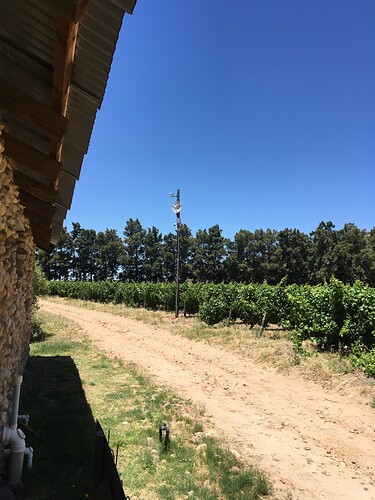https://www.4x4community.co.za/forum/showthread.php/346827-WIFI-battery-monitor?p=4717183#post4717183
This thread got me thinking about integrated systems vs stand alone solutions…
What are the chances of unplugging the Bluetooth, and connecting a WiFi module to the UART port?
Would probably need developer intervention … I don’t know.
What would the HA preferred connection be?
Bluetooth is perfect for low power, low data throughput communications. So it is perfect for updating stats and readings. Because you pair your devices it is resilient to interference from many devices (It will just ignore those it is not paired with’s data)
The problem with bluetooth is distance. There are two bluetooth classes for 10m and 100m comms. Most devices are using the 10m bluetooth version.
Wifi on the other hand can do high data throughput (think video streaming and coping large files) and in most cases will cover at least a 30m distance around a house (some Ubiquity directional devices can do 30Km line of sight) but interference is a problem. If your neighbour use the same channel as you that will have a degraded effect on you. More devices on the same network also mean more interference if they all want to send data at the same time.
Just looking at the distance figures, you should see that bluetooth with the 10m limit will be an issue in most homes. So while Wifi is not the perfect option, it is the cheapest next alternative.
Something else that would work well in future if the prices come down is LoRa. Think of it as a long range bluetooth thingy 
Yes they do look like that. It is still WiFi.
Getting the terminology right for different communication systems is important so we know what we’re talking about.
The deployment of the appropriate platform for an application is also important.
It’s great to see a superior system triumph over its competitors since this clears the way for the best system to prevail.
Yup. I see a lot of people use the term Wi-Fi for everything. Then you have to explain to them that Wi-Fi is really, in tech jargon, 802.11 (with a letter at the end for a revision) and very specific. With a directional antenna you can get impressive range, and apparently there is a long range variant, but one cannot just assume that your Wireless ISPs use it for last-mile connectivity ![]()
The one in the photo looks like a long-range Wi-Fi dish.
Yes. This is a link to the security company for the alarm system of the building. These long range WiFi connections are provided by ISPs in rural areas to provide reasonably fast internet.
As Telkom has abandoned its POTs telephone infrastructure (leaving the dilapidated wires and poles at the side of our roads) these remote homes can still be connected.
I liked the term ‘microwave’ to describe these point to point links but I guess that isn’t specific enough in the internet age.
That again use another frequency range.
The normal Wi-Fi as per the 802.11 spec either use the 2.4GHz or 5GHz ranges.
The 802.11 standard actually include many more frequencies, but those are not in normal day use AND they are not free ranges in all countries. What that mean is you don’t need a license to use the 2.4GHz and 5GHz ranges, but for most of the others your need to apply for a license that you pay yearly fees on.
What is intresting is that with the latest versions they have started giving WiFi easier names for people to use.
So WiFi 6 is the latest version and match to 802.11ax
And they have retrospectivly now assigned WiFi 5 as 802.11ac and WiFi 4 as 802.11n.
